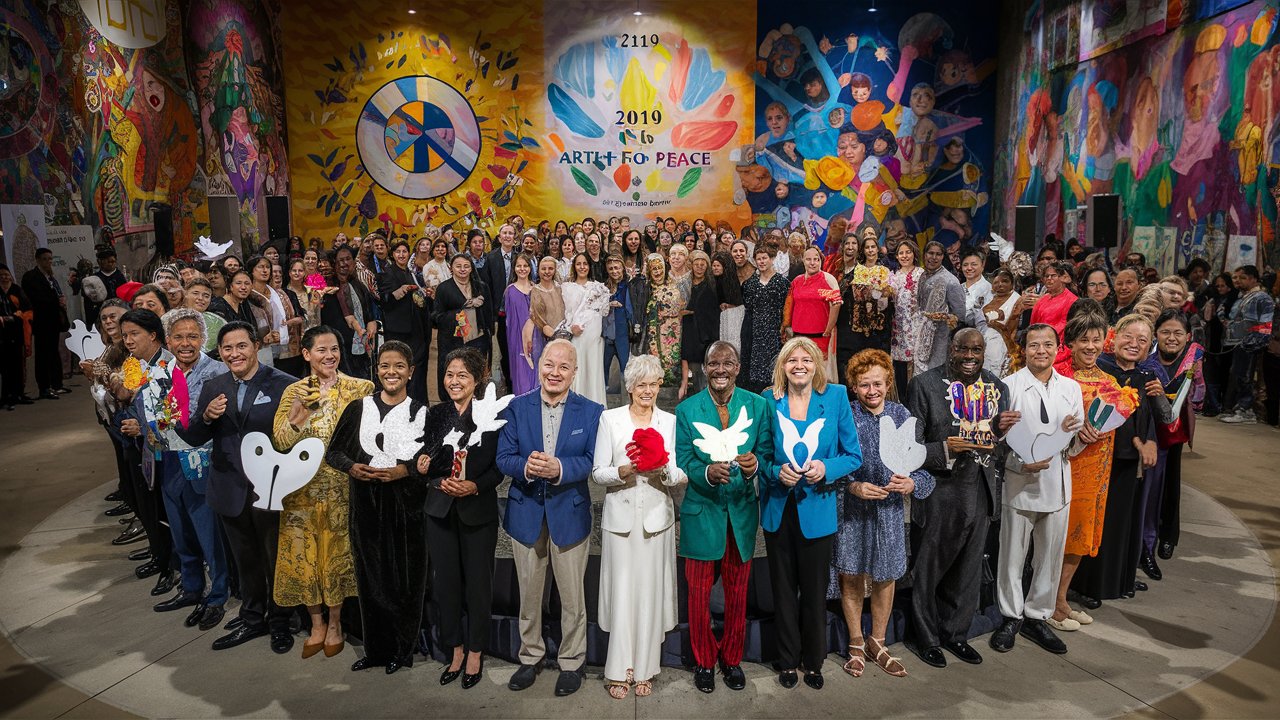4. Art for Peace. 2019

Tolerance justice art for Peace. 2019
Introduction
Art has been used as a means of expression and communication since the beginning of human history. Throughout the ages, artists have created works that reflect their personal experiences, beliefs, and values. In recent times, there has been a growing interest in the use of art as a tool for promoting peace and social justice. This essay explores the concept of “Art for Peace” and its role in creating a more peaceful world.
Art for Peace

Art for Peace refers to the use of artistic expression as a means of promoting peace, tolerance, and understanding. It encompasses a range of art forms, including visual art, music, dance, and theatre. Art for Peace initiatives seek to use the transformative power of art to create a more peaceful and just society.
Art for Peace initiatives often involve collaborations between artists, community members, and organizations that work towards peacebuilding. Such initiatives aim to create opportunities for dialogue, engagement, and reflection. Art for Peace events can take various forms, including public exhibitions, workshops, festivals, and performances.
Art for Peace and Social Justice
Art for Peace initiatives often overlap with social justice movements, which aim to address inequality, discrimination, and injustice. Art for Peace and social justice initiatives seek to create spaces for dialogue and engagement, where people can come together to discuss issues affecting their communities.
Artists working on Art for Peace initiatives often use their work to highlight social and political issues, such as human rights abuses, conflicts, and environmental degradation. Such work can serve to raise awareness and inspire people to take action towards social change.
The Role of Art for Peace in Conflict Resolution
Art for Peace initiatives can play a vital role in conflict resolution and peacebuilding. Artistic expression can provide a space for people to explore complex issues and emotions that are often difficult to articulate through words alone. Artistic expression can create opportunities for people to come together, share their experiences, and build connections across cultural and social boundaries.
Art for Peace initiatives can also serve to challenge stereotypes and promote understanding between different communities. Artistic expression can help to break down barriers, build empathy, and create opportunities for people to learn from one another.
Art for Peace and Healing
Artistic expression can also play a significant role in healing and recovery in the aftermath of conflicts and traumas. Art can provide a space for people to process their emotions and experiences, express their pain and sorrow, and find hope and inspiration for the future.
Art for Peace initiatives can provide opportunities for people to come together and work towards healing and reconciliation. Such initiatives can help to create a sense of community and belonging, provide a space for people to share their stories and experiences, and foster empathy and understanding across cultural and social divides.
Conclusion
In conclusion, Art for Peace initiatives are an essential tool for promoting peace, social justice, and healing. Artistic expression can provide a space for people to explore complex issues, build connections, and promote understanding. Art for Peace initiatives can play a significant role in conflict resolution and peacebuilding, challenging stereotypes and promoting empathy and understanding between different communities. Artistic expression can also provide a means for healing and recovery in the aftermath of conflicts and traumas. Overall, Art for Peace initiatives represent an essential means of promoting a more peaceful and just world.
Visit: https://techinsightguru.com/